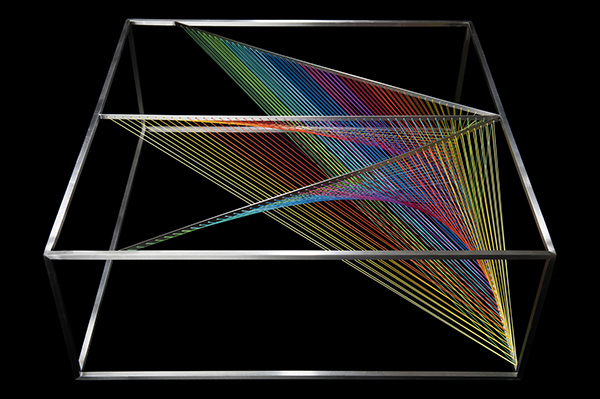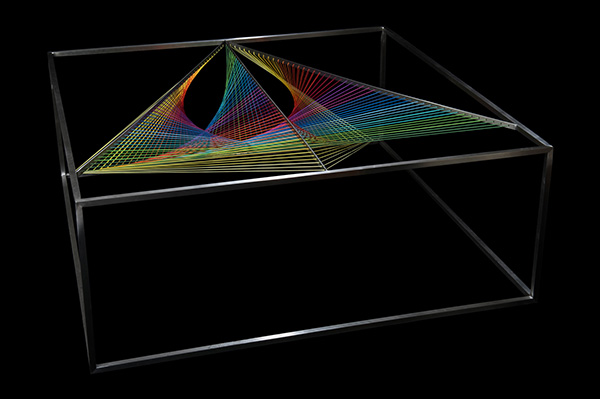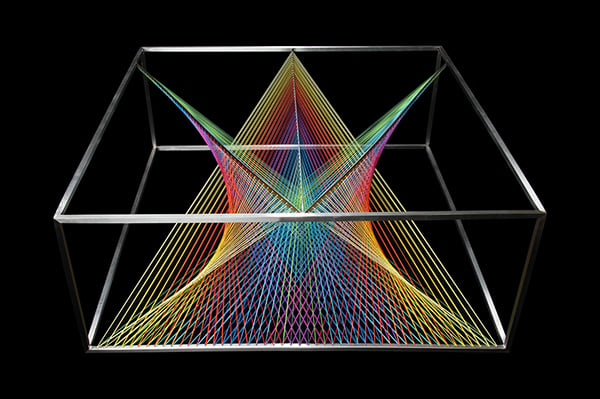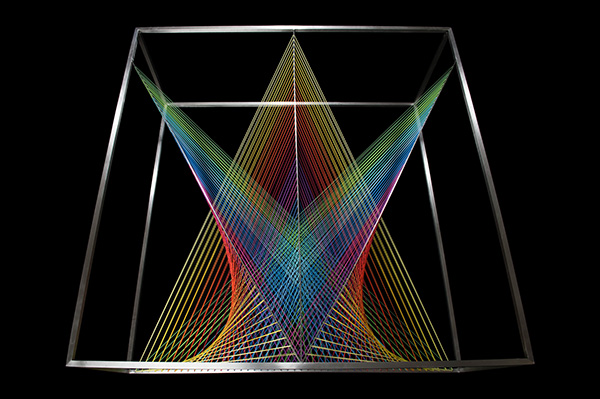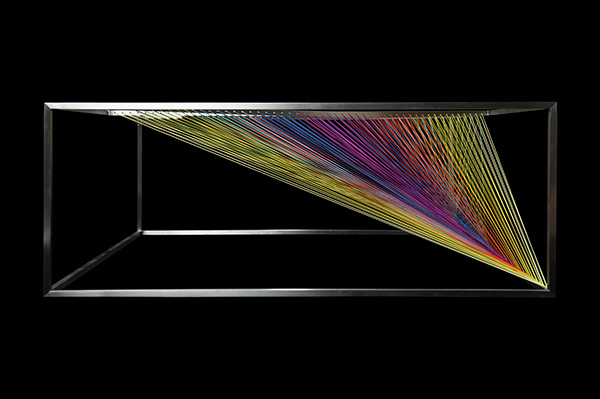In the late 17th century, Sir Isaac Newton used prisms to show that visible light is made up of seven different-colored bands, repurposing the Latin word “spectrum” to group those colors. In 1973, Storm Thorgerson and Hipgnosis appropriated the prism and the spectrum for Pink Floyd’s album The Dark Side of the Moon. That artwork proved to be so popular even people who have never listened and will never listen to Pink Floyd can’t help but blurt out “Dark Side of the Moon anyone?” when they see a prism and the visible spectrum. But LEGO Ideas member grobie87 doesn’t care about any of that. He made this set because he loves that the phenomenon is a fusion of science and art.


Grobie87 says he found both the spectrum and the prism challenging to recreate with LEGO. For the spectrum, he ended up going with thick bars for the seven colors. When viewed from the front, they look like they’re fanning out, but they’re actually mounted on top of each other. For the prism, he chose to make the left and right sides snap-on pieces on hinges, instead of having them snap to each other and to the prism’s faces.








Grobie87 also came up with a minifig called Roger Waters Roy G. Biv to accompany the set.






Despite appealing to physics and science nuts, LEGO enthusiasts, prog rock nerds and the Church of the Dark Side of the Moon Anyone Sayers, it’s amazing that as of this writing, grobie87’s proposal hasn’t garnered even a tenth of the required 10,000 votes for it to have a chance at becoming an official LEGO set. Let’s change that, shall we? Yes, we’ll say it. All together now: “Dark Side of the Moon anyone?”
 Score one for privacy... I guess? The FBI has confirmed to The Guardian that it's accepted new privacy rules for accessing data on American citizens collected by the NSA. The only rub? We don't know what the heck has been changed. In fact, the agency...
Score one for privacy... I guess? The FBI has confirmed to The Guardian that it's accepted new privacy rules for accessing data on American citizens collected by the NSA. The only rub? We don't know what the heck has been changed. In fact, the agency...
 Score one for privacy... I guess? The FBI has confirmed to The Guardian that it's accepted new privacy rules for accessing data on American citizens collected by the NSA. The only rub? We don't know what the heck has been changed. In fact, the agency...
Score one for privacy... I guess? The FBI has confirmed to The Guardian that it's accepted new privacy rules for accessing data on American citizens collected by the NSA. The only rub? We don't know what the heck has been changed. In fact, the agency...
 Last month White House CTO Megan Smith announced that Ashkan Soltani would be joining her staff as a senior advisor, after leaving his post as the FTC's chief technologist. Today, Soltani revealed he will not be able to take the job, after being info...
Last month White House CTO Megan Smith announced that Ashkan Soltani would be joining her staff as a senior advisor, after leaving his post as the FTC's chief technologist. Today, Soltani revealed he will not be able to take the job, after being info...
 Coral reefs are breathtaking homes for a diverse range of marine life, including turtles, sharks and eels. They're under threat from pollution, fishing and climate change though, and the data available on their deteriorating health is scattershot. To...
Coral reefs are breathtaking homes for a diverse range of marine life, including turtles, sharks and eels. They're under threat from pollution, fishing and climate change though, and the data available on their deteriorating health is scattershot. To...









 The Wall Street Journal is reporting that China's government has now leant on ZTE to produce a smartphone using predominantly local hardware that'll run COS, a homegrown operating system that's designed to be immune to US-based hacking attempts. Th...
The Wall Street Journal is reporting that China's government has now leant on ZTE to produce a smartphone using predominantly local hardware that'll run COS, a homegrown operating system that's designed to be immune to US-based hacking attempts. Th...



